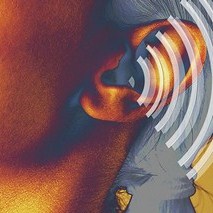
Noise-induced hearing loss can result from either decades of prolonged exposure to loud music or one single loud explosion or bomb blast.
Hearing damage tends to begin with sustained noise levels of around 85 decibels, equal to the level produced by a hair dryer or food blender. Explosions tend to sound around 170 decibels, delivering as much if not more damage as results from lower yet prolonged levels of noise exposure.
A Possible Regeneration?
Recent research at Stanford University on hearing loss mechanisms in mice found that it’s possible to reverse or prevent damage to the microscopic hair-like cells called cilia inside the ear that promote hearing.
While loud explosions don’t actually destroy the cochlea or auditory part of the inner ear, they do damage the cilia and nerve cells that help convert and send nerve impulses representing sounds to the brain, as the researchers claimed in findings published in the journal PLOS One in July.
Staggering Numbers
Supported by the Defense Department, the researchers found that more than 60 percent of service members wounded in action tend to have injuries to their eardrums, tinnitus or ringing in their ears, hearing loss or a combination of these three conditions.
Researchers exposed anesthetized mice to loud explosions then studied the inner workings of the subjects’ ears, finding some damaged hair and nerve cells inside the cochlea, while the rest had been destroyed.
Hampering CiliaThe formation of scar tissue inside the cochlea limits the ability of the remaining hair cells to vibrate and pick up sounds. Researchers claim that quickly stopping or slowing the body’s immune response and inflammation around the damage could, in turn, limit the damage and retain some hearing.
Another study demonstrated that an experimental drug partially regenerated cilia in completely deaf mice, according to researchers at Massachusetts Eye and Ear Hospital and Harvard Medical School in January’s issue of the journal Neuron.
Labeled LY411575, the drug commonly called Notch works by blocking a protein. The drug typically prevents stem cells, which normally support hair cells, from becoming new cilia within the cochlea.
The study showed that the cells were generated from differentiating stem cells, while brain scans confirmed that new cells worked to partially restore hearing in mice. Although the restored hearing was not up to par with the normal range, the mice could detect loud noises at low frequencies, such as a door slamming or a thunderclap.
In September, researchers at Oregon Health and Science University’s Hearing Research Center, discovered that injections of a protein in mice before noise exposure at 120 decibels caused the inner ear cells to change their arrangement in response to the loud noise.
Continued Protein Studies
Published in the Journal of the Federation of American Societies for Experimental Biology, the study involved using a protein called pigment epithelium-derived factor, found in most vertebrates and studied for heart disease and cancer treatments.
Researchers speculated to The Denver Channel that this study could make it possible to treat soldiers, emergency workers and others with the protein before they move into environments with a high risk of loud blasts or explosions.
Want to learn more about hearing loss and how to treat it? Please feel free to schedule a consultation with our team. Stay up-to-date with this research and find a hearing loss specialistin your area today!
Call 877-631-9511 for FREE Consultation



